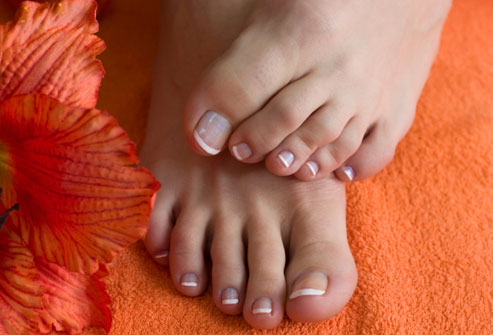It happens to the best of us and now with a more active lifestyle that many of us lead, athlete’s foot (tinea pedis) is increasingly common, so don’t be embarrassed.
What exactly is it?
In the simplest terms, it’s a type of fungal infection which occurs commonly between the toes, or on the soles and sides of the feet. It is known as athlete’s foot as it is very common among athletes, and the fungi that causes it is found in areas where athletes often gather, such as locker rooms and public showers.
The affected skin may be itchy, red, scaly, dry, cracked or blistered, it’s contagious and recurrent in nature. Though not serious, the infection should be treated before it begins to spread to other areas and cause discolouration and thickening of the nails.
Related: Prevention and Home Remedies for Nail Fungus

Here’s how you can avoid it
Athlete’s foot is caused by fungi growing and multiplying on the skin. The fungi that cause the infection thrive in warm, dark and moist places like feet, take these steps to avoid it happening to you:
- Keep your feet clean and dry at all times
- Don’t wear shoes that cause your feet to get hot and sweaty
- Don’t walk around barefoot in areas that may be a source of the infection, such as communal showers, locker rooms, and gyms
- Do not share towels, socks, and shoes with other people
- Dry your feet gently but thoroughly after washing them, particularly the areas between your toes
- Wear cotton socks and roomy shoes made of natural materials such as leather – this can allow your feet to “breathe”
- Wear a fresh pair of socks, tights or stockings every day
- Change your shoes every couple of days – this allows them to dry out between uses
- Use talcum powder on your feet to stop them getting sweaty
- Do not use moisturiser between your toes, as this can help fungi multiply
You may be prone to the infection if you have a weakened immune system or diabetes, so do keep a look-out and constantly monitor your own self.
Treatment is usually topical creams, but do go see a doctor or pharmacists if you suspect you have athlete’s foot. Better to treat it early and avoid the spread!









